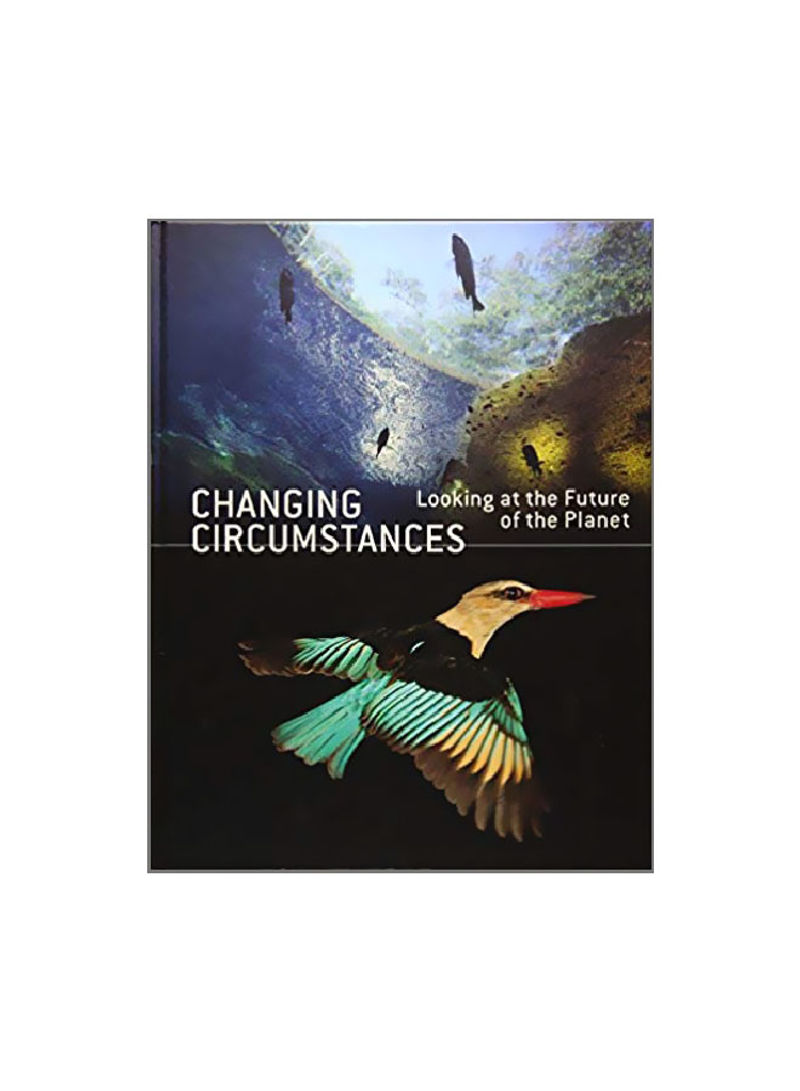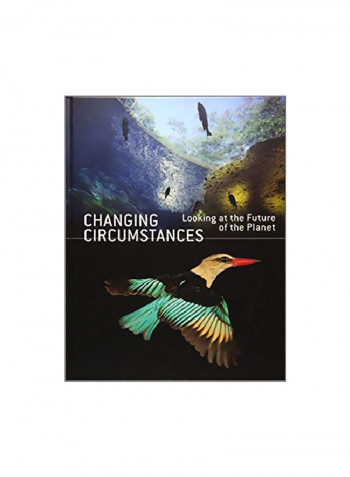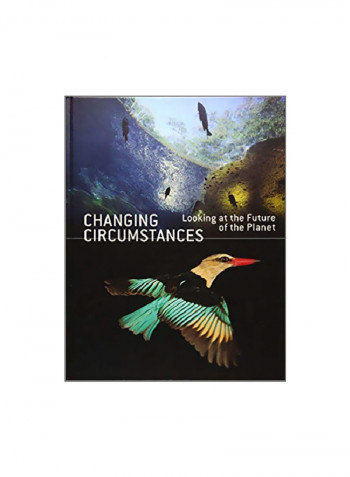Changing Circumstances : Looking At The Future Of The Planet Hardcover
Recommend
Sort by
Rating
Date
Specifications
Author 1
Wendy Watriss
Book Description
This book is an expansive presentation of international contemporary photography, video, and new media art addressing the challenges presented by global change. It shows the works of 34 international artists, focusing on the ways in which these media reflect on our relationship, as individuals and as a society, to the natural environment around us. An important aspect of this presentation is how individual artists are using their work to address the impact of human behavior on the natural environment. The purpose of the book is to provoke, through visual art, new ways of thinking about how we see our role within the natural environment and our connection(s) to the rest of the planet and how this affects our future. The book looks at ways in which artists and scientists are re-visioning our relationship with the Earth, its oceans and atmosphere. The artists and artworks confront a broad range of issues that are challenges to the future of the Earth. These include climate change, water, energy, biodiversity, and food production, population, natural resources, waste, and migration. The Authors The two lead essays set the scientific, ecological and biological context for the book. Geof Rayner, a scholar and public health policy expert in the UK, looks at the evolution and impact of fossil fuel development and use. He will discuss the history and meaning of the Anthropocene and the need, even in the context of human health, to redefine our relationship to the ecosystems of the earth and the species with which we share the Earth. This includes an understanding of limits in relation to co-maintaining human existence and that of the planet. He discusses the rarity of the dynamic processes that came together to enable life as we know it, and the dangers of continuing to treat the resources of the planet as limitless. He argues for a view of the planet as ever-changing, and inextricably linked to the sustainability of human existence. Thomas E. Lovejoy directed the World Wildlife Fund-US program from 1973 to 1987 and was responsible for its scientific, Western Hemisphere, and tropical forest orientation. A tropical biologist and conservation biologist, he has worked in the Amazon of Brazil since 1965. Currently he is a Senior Fellow at the United Nations Foundation and University Professor in the Environmental Science and Policy department at George Mason University. In his essay, he shows the importance of biodiversity, one of the least understood mechanisms relating to the self maintenance and ever changing life systems of the planet. What does biodiversity mean to the health, enjoyment, economics and sustainability of the planet? What does it mean to human society? Why should we be concerned? How does the eventual loss of endangered species affect human society and the planet? And how does the issue of biodiversity fit into the overall dynamic and impact of climate change? Wendy Watriss, pioneering FotoFest curator, writes about the historical antecedents and importance of a more sensitive and informed vision about our relationship to Nature. She looks at the recurring dialectic between unlimited economic expansionism and a more diversified balancing between societal needs, natural resources and ecosystem services. FotoFest executive director Steven Evans provides the introduction for the book and the context for presenting these subjects in the framework of art. Each of the artists - an unorthodox combination of editorial photographers and fine artists has provided a statement alongside the images to communicate his/her relationship as a human being and a professional story-teller to the environment. The Artists: Amy Balkin (USA) Mandy Barker (UK) Daniel Beltra (Spain) Atul Bhalla (India) Edward Burtynsky (Canada) Barbara Ciurej and Lindsay Lochman (USA) Pedro David (Brazil) Luis Delgado-Qualtrough (Mexico/USA) Susan Derges (UK) Nigel Dickinson (UK) Dornith Doherty (USA) David Doubilet (USA) Peter Fend (USA) Roberto Fernandez Ibanez (Uruguay) Karen Glaser (USA) Gina Glover (UK) Ingo Gunther (Germany/USA) Niklas Goldbach (Germany) Lucy Helton (UK/USA) Chris Jordan (USA) Isaac Julien (UK) David Liittschwager (USA) Pablo Lopez Luz (Mexico) Evelyn Messinger and Kim Spencer (USA) Vik Muniz (Brazil) Robert Harding Pittman (Germany/USA) Meridel Rubenstein (USA) Joel Sartore (USA) Toby Smith (UK) Jamey Stillings (USA) Martin Stupich (USA) Brad Temkin (USA) The book Changing Circumstances is a collaboration between FotoFest International and Schilt Publishing."
ISBN-10
9053308628
Language
English
Publisher
Schilt Publishing b.v.
Publication Date
9 May 2016
Number of Pages
272
About the Author
The Authors The two lead essays set the scientific, ecological and biological context for the book. Geof Rayner, a scholar and public health policy expert in the UK, looks at the evolution and impact of fossil fuel development and use. He will discuss the history and meaning of the Anthropocene and the need, even in the context of human health, to redefine our relationship to the ecosystems of the earth and the species with which we share the Earth. This includes an understanding of limits in relation to co-maintaining human existence and that of the planet. He discusses the rarity of the dynamic processes that came together to enable life as we know it, and the dangers of continuing to treat the resources of the planet as limitless. He argues for a view of the planet as ever-changing, and inextricably linked to the sustainability of human existence. Thomas E. Lovejoy directed the World Wildlife Fund-US program from 1973 to 1987 and was responsible for its scientific, Western Hemisphere, and tropical forest orientation. A tropical biologist and conservation biologist, he has worked in the Amazon of Brazil since 1965. Currently he is a Senior Fellow at the United Nations Foundation and University Professor in the Environmental Science and Policy department at George Mason University. In his essay, he shows the importance of biodiversity, one of the least understood mechanisms relating to the self maintenance and ever changing life systems of the planet. What does biodiversity mean to the health, enjoyment, economics and sustainability of the planet? What does it mean to human society? Why should we be concerned? How does the eventual loss of endangered species affect human society and the planet? And how does the issue of biodiversity fit into the overall dynamic and impact of climate change? Wendy Watriss, pioneering FotoFest curator, writes about the historical antecedents and importance of a more sensitive and informed vision about our relationship to Nature. She looks at the recurring dialectic between unlimited economic expansionism and a more diversified balancing between societal needs, natural resources and ecosystem services. FotoFest executive director Steven Evans provides the introduction for the book and the context for presenting these subjects in the framework of art. Each of the artists - an unorthodox combination of editorial photographers and fine artists has provided a statement alongside the images to communicate his/her relationship as a human being and a professional story-teller to the environment."
Author 2
Steven Evans



